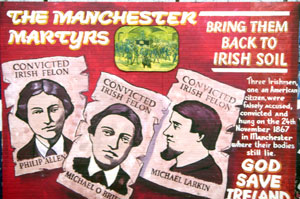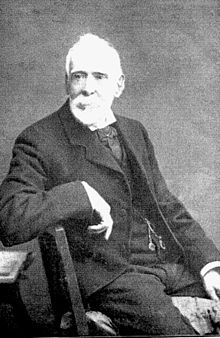Many idealize Ireland after reading “The Lake Isle of Innisfree” and other romantic pieces, but in reality, Ireland has no true “essence”. The writings of J.M. Synge exhibit this especially well; in searching for the “true Ireland,” Synge seems to contradict himself on several counts. He showcases the Aran Islands as a collection of quant villages inhabited by simple people, but goes on to show that there is actually more to the population than he thinks. Synge quickly runs into a core problem of the essential in his attempt to depict the Aran Islands and their people in a traditional manner: the complexity of humans and of societies.
In an excerpt of The Aran Islands, Synge begins by describing his current writing environment; “I am in Aranmor, sitting over a turf fire, listening to a murmur of Gaelic that is rising from a little public-house under my room” (Synge 1907). Immediately, he has set the scene for a charming tale of the quaint Irish people living simply in their barren, rainy landscape, and from here he starts to make an attempt at exploring their world.
Standing in Doolin looking out at Inisheer, it is easy to imagine the land as Synge saw it over 100 years ago. The land is nearly useless to humans; it cannot effectively be cultivated, it is difficult to build on, and it doesn’t offer much in the way of shelter. As a result, it was scarcely populated in Synge’s time, and still is today, save a few wandering tourists attracted by authentic hand-knit sweaters or passing students eager to escape stuffy classrooms.
Synge’s writing paints a vivid picture of the local land and population of the Aran Islands, describing in detail everything from their linguistic proficiency to their dress to their attitudes towards the Spanish American war. In doing so, he provides a source of vague uncertainty for readers projecting their own uninformed views on the archipelago. Bouncing between issues of globalization (trading with the mainland, stories of people who have left the island, and their curiosity of outside conflicts) and localized culture and apparel (he speaks of communication difficulties with Gaelic speakers, and of the “pampooties” worn as footwear by the locals), he demonstrates the complexity of the society, despite its relatively isolated and simplistic status.
In constantly moving between larger and smaller viewpoints like this, Synge consistently goes against the expectations of the reader, whose views are challenged each time these switches occur. His continues to underscore the initial impressions that he offered of the islands each time he makes these juxtapositions, and that is one of the things that truly makes this piece fantastic.
The Aran Islands demonstrates the flaws of thinking about Ireland in an essential way. Synge intended to challenge people’s perceptions, and his writing succeeded in laying the groundwork for this. Ireland and its people don’t have an essence any more than those in the United States, Great Britain, France, or China. They are just people, living their lives like all the rest. The Irish are the same as they always have been: proud, conscious, and human.


